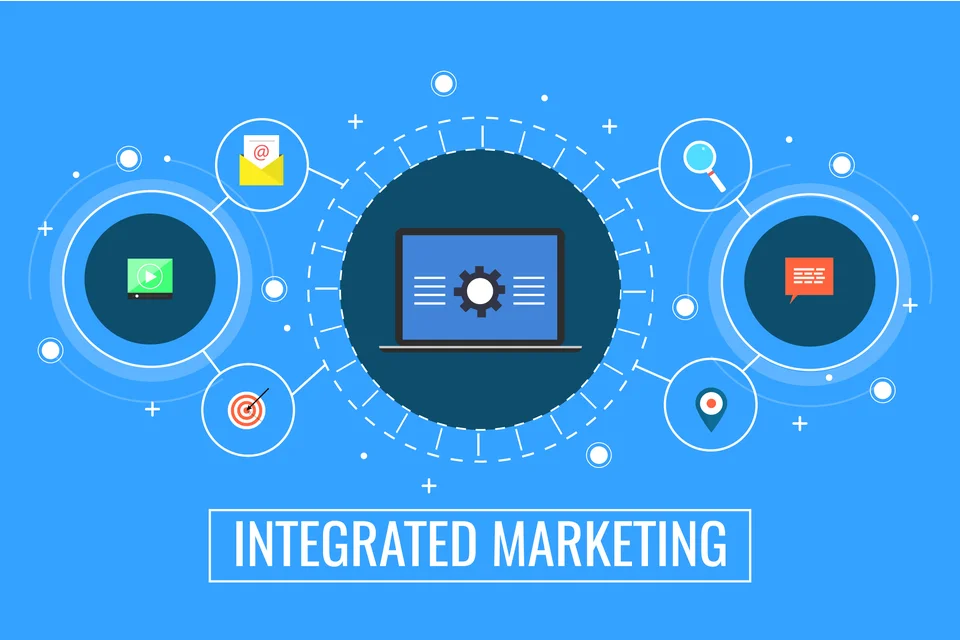The Harmonious Symphony of Integrated Marketing: Amplifying Your Accounting Firm’s Visibility

Digital Marketing Expertise for Accountants and Bookkeepers
+1-267-762-1886 617 Linnet Road, Unit 3, Norristown, PA 19403

In the world of marketing, harmony is key. Each element of your strategy is an instrument in your orchestra, and it’s only when they’re all playing together in perfect synchronization that you achieve a symphony of success. This is what we call integrated marketing – a harmonious approach that combines SEO, content marketing, social media, and email marketing into a cohesive strategy.
When these elements work together, they amplify each other’s effects, leading to greater visibility for your accounting firm. But how do we bring these elements together, and what does a successful integrated marketing strategy look like?
Integrated marketing is not about treating each marketing channel as a separate entity, but rather understanding how they can interconnect and reinforce each other. It’s about seeing the big picture – how your blog posts can boost your SEO, how your social media can drive traffic to your blog, how your email newsletter can enhance your social media engagement, and so on.
This integrated approach allows for a more seamless user experience, ensuring your audience receives consistent messaging across all channels. It also allows you to maximize your resources and reach, as each marketing channel boosts the others.
Search Engine Optimization (SEO) forms the bedrock of your online presence. By optimizing your website and content for relevant keywords, you can attract potential clients who are searching for the services you offer. But SEO doesn’t exist in a vacuum – it’s deeply interconnected with other elements of your marketing strategy.
Your blog posts, for example, can be optimized for relevant keywords to attract organic traffic. In turn, this can enhance your site’s overall SEO, making it more likely to be found by potential clients.
Content marketing involves creating valuable content that your audience finds informative, entertaining, or helpful. Content marketing generates over 3x as many leads as outbound marketing and costs 62% less. This not only establishes your firm as an authority in the field but also builds trust with your audience.
By creating high-quality content, you provide value to your audience, which in turn leads to increased engagement and loyalty. Your content can also be shared on social media or included in your email newsletter, further amplifying its reach.
Social media platforms provide an opportunity to engage directly with your audience. You can share your blog posts, answer questions, provide updates, and even share content from others that your audience might find valuable.
91% of executives will increase social media marketing budgets in the next 3 years. By actively engaging on social media, you can build a strong online community around your firm. This not only increases your visibility but also strengthens your brand’s reputation as a trusted and approachable entity.
Email marketing allows you to keep in touch with your audience on a regular basis. By sending out a regular newsletter, you can keep your firm top-of-mind for your audience, share your latest blog posts, and provide updates on your services.
Importantly, email marketing also provides an opportunity to drive traffic back to your website, boosting your SEO and further amplifying your content marketing efforts.
When these elements are brought together, they create a marketing strategy that is greater than the sum of its parts. Your SEO efforts make your content more visible, your content drives engagement on your social media, your social media drives traffic back to your website, and your email marketing keeps your audience engaged and returning to your site.
This is the power of integrated marketing. It’s about creating a self-reinforcing cycle that drives continuous growth and visibility for your accounting firm.
To truly appreciate the value of an integrated marketing strategy, it’s essential to measure its success. This involves tracking the performance of your website, social media platforms, and email campaigns, as well as the engagement and conversion rates of your content.
By monitoring these metrics, you can identify which elements of your strategy are working well and where there’s room for improvement. This allows you to continuously optimize your strategy, ensuring it remains effective and delivers the best possible results.
While an integrated marketing strategy offers numerous benefits, it’s not without its challenges. These can include coordinating efforts across multiple channels, ensuring consistent messaging, and finding the time and resources to manage all elements effectively.
However, with careful planning, clear communication, and the use of automation tools, these challenges can be overcome. And the benefits – increased visibility, engagement, and conversions – make it well worth the effort.
Like a symphony, an integrated marketing strategy is all about harmony. Each element plays its part, but it’s when they all come together that the magic happens. So why not pick up the conductor’s baton and start orchestrating your own integrated marketing symphony? Your audience awaits the performance.
Unmasking the Hidden Costs of Stagnant Marketing As you step onto the dynamic landscape of digital marketing, the need for continual adaptation […]
THE IMMEDIATE IMPACT OF PPC FOR TAX PROFESSIONALS Pay-Per-Click (PPC) advertising offers tax professionals a dynamic marketing platform to leverage in the […]
Unmasking SEO: Not Just a Buzzword In the digital marketing realm, the acronym SEO is thrown around quite a bit. However, Search […]